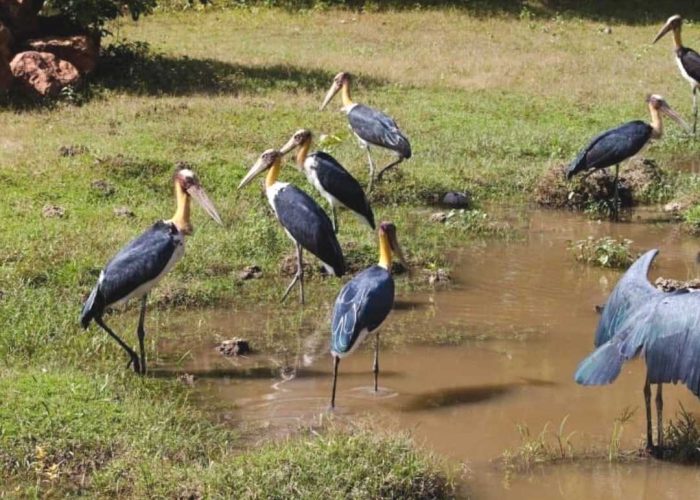The “Greening Prey Lang Project” (USAID-GPLP) of the United States Agency for International Development is collaborating with local people and other partners to protect the oriental darter, and other endangered species present in the Prey Lang extended landscape.
The oriental darter is a cormorant-like bird that loves to reside in and around wetlands because its feathers are semi-permeable to water, which helps the bird when swimming and capturing fish, according to USAID-GPLP.
It is sometimes referred to as the snakebird because of its long, thin neck and head that remain visible above the water while the rest of the bird is submerged below.
It may be found in environments such as lakes, marshes, and rivers. This species may be found in Cambodia all year and has significant breeding grounds in the Prek Toal area of Tonle Sap Lake and some smaller sites in the north.
“This bird has a snake-like neck, a large beak as sharp as a sword, a black colour, a long tail, and long white stripes on the back,”
According to the report, poaching, habitat degradation, and land encroachment all pose threats to major bird species in the Prey Lang extended area.
Birds that lay their eggs on the ground are exposed to predators such as dogs, people, and other wildlife. At the same time, those that construct their nests in trees are subject to logging, poaching, and land removal for agriculture or habitation, according to the report.
Some of these dangers are mitigated by bird nest protectors. 127 nests and 232 chicks of endangered bird species were observed and safeguarded during the most recent breeding season, between June 2020 and May 2021, under the Preah Vihear provincial bird nest protection initiative, which was supported by USAID-GPLP.
“Throughout the year, the initiative recruited 54 bird nest guardians from nearby communities to act as bird nest protectors during the breeding season, protecting nesting birds and their offspring from dangers. “Species tracked this year included Giant Ibis, White-shouldered Ibis, Sarus Crane, Lesser Adjutant, Woolly-necked Stork, Black-necked Stork, Masked Finfoot, White-winged Duck, and Red-headed Vulture,”
The USAID-GPLP gives community members a daily fee for each nest they monitor. The monitoring period can take up to three months, depending on the bird species, commencing with the discovery of active nests with eggs and ending when the chicks have successfully fledged.
Numerous studies have demonstrated that the bird nesting program is extremely beneficial. By including local people in conservation, the program not only promotes biodiversity conservation and ecosystem health, but also improves community livelihoods and fosters inclusive and effective landscape governance.









